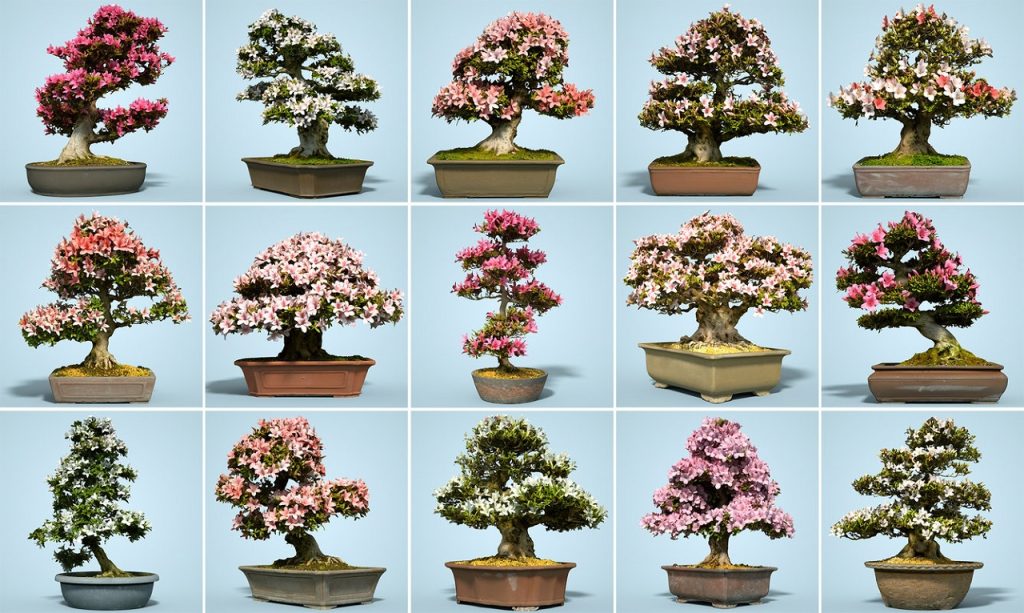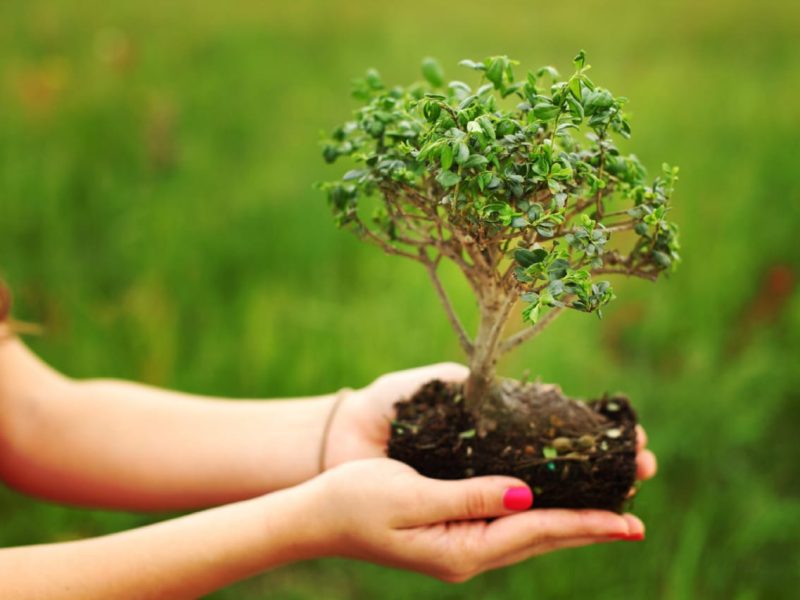Mastering bonsai takes time and patience. So that the first experiments with the cultivation of miniature trees were successful and do not discourage you from developing in this direction and further, start with simple and accessible solutions.
Despite the fact that the term “bonsai” itself came to us from the Japanese language, the historical homeland of this direction of landscape art is not the Land of the Rising Sun, but China. It was there, together with Buddhist monks, that the technique of growing trees in miniature came to Japan, where it is widespread.
The Japanese white pine in the collection of the National Bonsai Foundation in Washington will celebrate its 400th anniversary in 2025.
Because providing overwintering for large-sized caddy arrangements requires some knowledge and skill, bonsai are most often grown in home or “semi-home” conditions in the midlands.

Adenium
Adenium differs favorably from other crops used to create bonsai, because its trunk thickens much faster than the trunks of other plants. The main thing is to make the right substrate.
Variants of mixtures for growing adeniums:
- 50% succulent soil, 25% perlite, 15% vermiculite, 10% river sand;
- 50% of peat with neutral acidity, 30% of leaf soil, 20% of vermiculite or river sand.
Adeniums are very fond of sunlight, so they can be grown in a south-facing window without being particularly afraid of the bright midday sun. An additional advantage of this plant is its ability to easily tolerate dry air and the proximity to the heat that central heating batteries provide in winter.
If you do everything right, already in the second year after moving to your windowsill the plant will please you with abundant flowering. Time and timing depend on the variety of adenium and the weather established in your region.
- Adenium arabicum. It blooms from May to October, loses its leaves in winter and enters a dormant period. Flowers are bright pink.
- Adenium Socotranum. In size noticeably smaller than its other relatives. The flowers are delicate pink, closer to peach.
- Adenium Somali. Can grow up to 1.5 m, so in the room breeding is not common. Adenium Somali blooms with small flowers that form on the plant throughout the season.
- Adenium obese. The most popular variety of this plant in our area. Blossoms large (up to 7 cm across with flowers), starting in May. Flowers pink or scarlet.
Cotoneaster
If you want the plant to please the eye not only with an unusual crown shape, but also to bloom, bear fruit and change the color of the leaves at the same time, try to grow a bonsai from a dogwood.
Like many other plants that form to create bonsai, it prefers sun or penumbra, but, unlike some crops, it tolerates wind and draughts well.
Transplant cotoneaster every year, before the plant begins to form buds, in a container of larger size. The root mass in this case is cut by a third.
Cotoneaster prefers dry and light soils. In early June, all young shoots should be shortened to two buds. Pruning the “surplus” is carried out in the fall or spring before the beginning of the growing season.
Juniper
Since the natural habitat of conifers is temperate and subtropical climates, growing them in an apartment or private home is often a challenge.
However, if you are firmly convinced that you want to have a “classic” coniferous bonsai, pay attention to junipers.
For example, the Chinese juniper has proven itself excellent for growing in “semi-home conditions”. In the winter this plant feels great even at room temperature. The main thing is to keep it away from batteries and sprinkle it frequently. By mid-spring, the plant can begin to be taken out into the fresh air, gradually increasing the time of stay to around the clock.
Prefers sun or penumbra and likes watering. In hot weather the plant requires regular spraying.
Juniper is shaped with a wire. The latter is acceptable to keep on the plant for up to three years. However, even if the wire grows into the branches, traces of it will overgrow within two years. The shape is maintained by regular pruning. Repotting the “ready” bonsai is carried out every 3-4 years.
Tolsthanka
As it turned out, the money tree, familiar to us from childhood, is excellent for growing bonsai. However, do not rush to get scissors – not the fact that the glorious on your windowsill Tolstyanka suitable for this purpose.
Experienced florists do not advise the formation of bonsai from adult plants, because too radical pruning can harm the plant. Not to mention the fact that transplanting from a deep pot into a low flat container, which is traditionally used to grow bonsai, will be a great stress for the bonsai.
Most often bonsai grown “from scratch”. For this purpose, the plant is separated from the scion, which is then rooted and planted in a small container.
Thick plants shoots are very brittle, so they can be bent with a wire, so the symmetry of the crown and the direction of the branches “regulate” by removing the “extra” shoots.
Ficuses
Virtually any varieties of these plants can be used for shaping in the bonsai technique. However, the most interesting and unconventional solutions of the shape of the trunk are obtained with Reitusa ficus and microcarpa.
The plants of this family react very well to pruning and don’t need a big space for developing root system, what makes them an excellent variant for growing in bonsai technique.
The branches of the ficus remain elastic at any age, which means that the crown of this plant can be shaped throughout its life.
Ficuses are very light-loving, but not so much that they can be kept in direct sunlight all day long. You should therefore shade the plant on particularly hot days. Ficus with dark foliage can grow even in the penumbra. The only thing that categorically do not tolerate ficus – too dry air. And this means that the plant needs regular sprinkling.
In the first weeks of staying in a new place the plant may lose its leaves, but do not be afraid of this. Go on watering and spraying, shade and, of course, don’t rush with the nutrients and pruning or trimming measures – give the plant some time to recover and it will be back to normal in no time.
In addition to the plants described above, thyme, lavender, rosemary, oregano, laurel are also quite suitable for growing in the apartment or inside the house.



